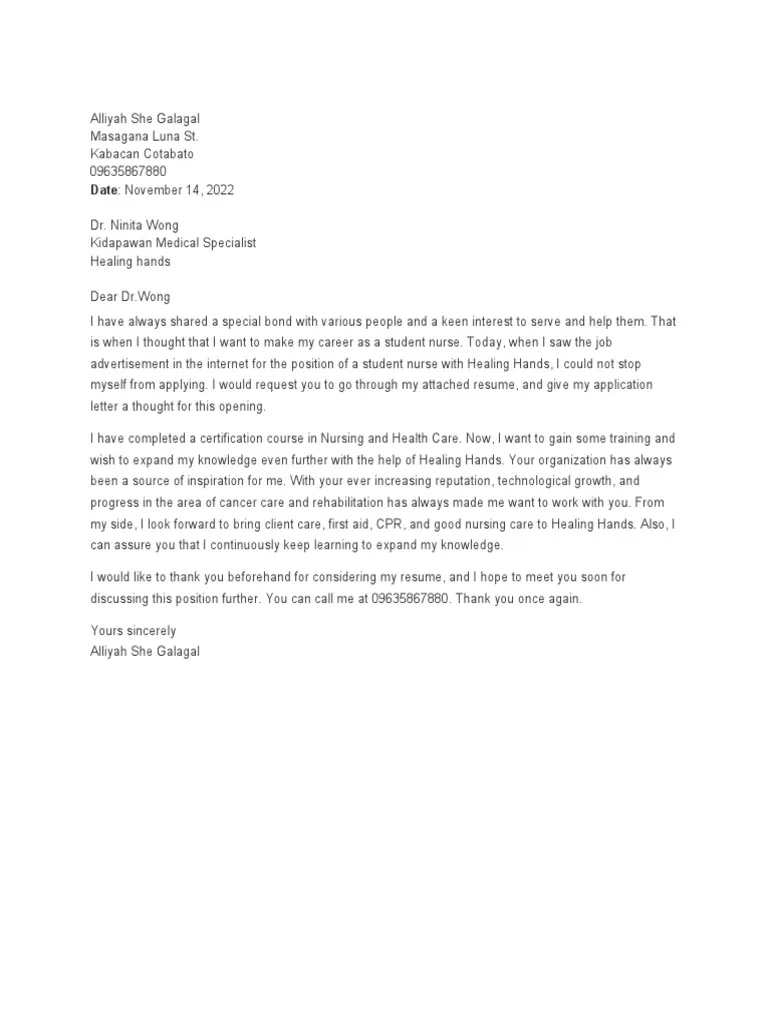What is a Nursing Student Cover Letter
A nursing student cover letter is a crucial document that accompanies your resume when applying for nursing internships, externships, or entry-level nursing positions. It’s your first opportunity to make a positive impression on a potential employer. The cover letter allows you to introduce yourself, highlight your relevant skills and experiences, and express your enthusiasm for the position and the healthcare organization. It provides a platform to showcase your personality and communicate your passion for nursing beyond the information listed in your resume. Crafting a well-written cover letter is a key step in the job application process, as it demonstrates your communication skills and attention to detail.
Why a Cover Letter is Important
A well-crafted cover letter is your chance to distinguish yourself from other applicants. It allows you to elaborate on your resume, providing context and depth to your experiences. Recruiters often read cover letters before resumes, making this your first impression. It’s an opportunity to showcase your unique skills and personality. The cover letter provides a space to express genuine interest in the specific role and healthcare organization. Furthermore, a cover letter enables you to explain any gaps in your experience or unusual circumstances. It also displays your written communication skills, which are critical in nursing. For many employers, a strong cover letter is an essential tool in determining whether to invite you for an interview.
Key Components of a Nursing Student Cover Letter
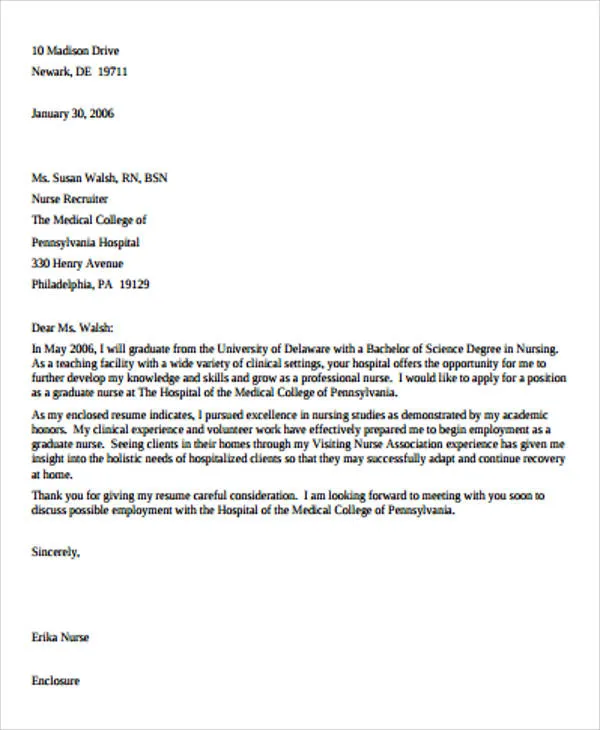
A compelling cover letter for a nursing student has several key components that work together to create a strong narrative. These components ensure you present your information clearly and professionally. It’s vital to include contact information, a concise opening paragraph, compelling body paragraphs that showcase your skills and experiences, and a strong closing paragraph. Each section plays a vital role in highlighting your qualifications and increasing your chances of getting hired. A well-structured letter demonstrates attention to detail, a crucial skill in the nursing field.
Contact Information
Applicant’s Name, Address, Phone, Email
At the top of your cover letter, provide your full name, complete mailing address, phone number, and professional email address. Ensure your email address is appropriate and easy to read. This information is essential for the employer to contact you quickly and efficiently. Double-check the accuracy of the details to avoid any communication issues. Keep this section clean and clear, using a simple format that is easy to read.
Date and Employer’s Contact Information
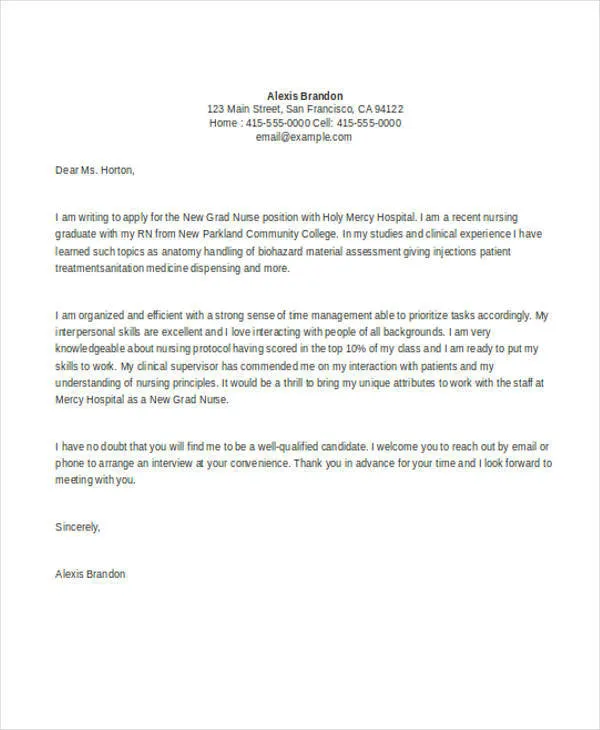
Beneath your information, include the date and the employer’s contact information. Include the hiring manager’s name and title if possible; otherwise, use a general title such as ‘Hiring Manager.’ Include the name of the healthcare organization and its address. Properly formatting this section shows that you have paid attention to the details and gives the employer the information they need to know.
Opening Paragraph
Expressing Interest
Start your cover letter by clearly stating the position you are applying for and where you found the job posting. Immediately express your enthusiasm for the opportunity and the organization. A strong opening paragraph captures the reader’s attention from the beginning and makes them want to know more. This first impression is critical to establishing a positive tone for the rest of the letter.
Mentioning the Position
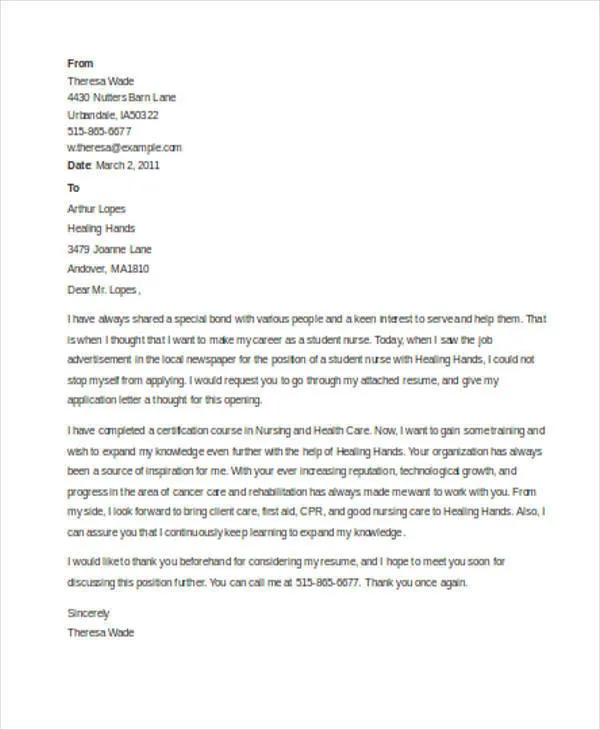
Clearly mention the specific nursing position you are applying for, such as a nursing externship, clinical placement, or a volunteer position. If you are applying for a specific role, provide the job title. If you are applying for a general position, state your area of interest within nursing. Ensure you are clear about the position you are seeking to avoid any misunderstandings. Use keywords from the job description to make your application more relevant.
Body Paragraphs
The body paragraphs are the core of your cover letter. Here, you will highlight your skills, experience, and achievements to demonstrate your suitability for the role. This section should effectively sell your qualifications and make you stand out from other applicants. Use a strategic approach to present your strengths in a clear, concise, and engaging manner. Each paragraph should focus on a specific aspect of your qualifications.
Highlighting Skills and Experience
Focus on your relevant skills and experiences gained during your nursing education and any clinical placements. Use the job description to identify the required skills and tailor your letter to match. Mention skills like patient care, critical thinking, communication, and teamwork. Provide examples of how you have demonstrated these skills in previous experiences. Make sure the experiences you describe are relevant to the position you are applying for. Use specific examples to showcase your abilities.
Academic Achievements
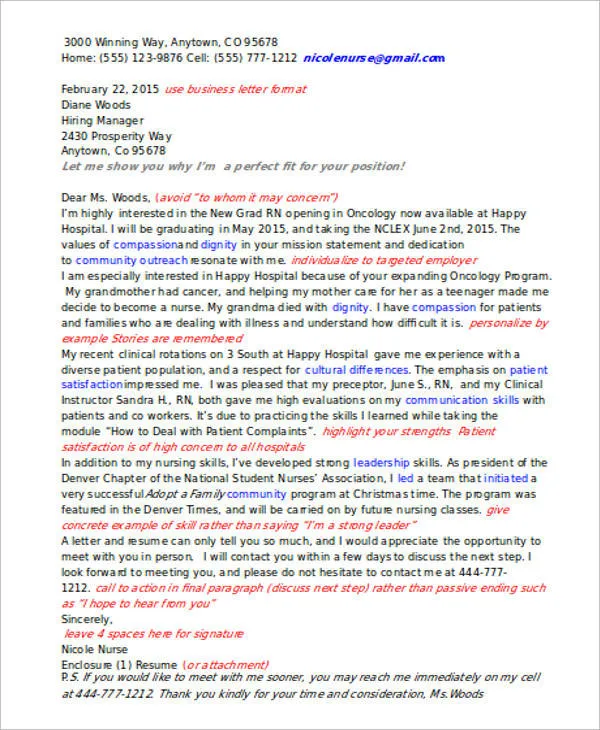
Include any significant academic achievements, such as a high GPA, Dean’s List, or relevant coursework. These achievements show your dedication and academic excellence. If you have received any scholarships, awards, or honors, be sure to mention them as well. Highlight any special projects or research you have completed, particularly if they relate to the position. Include any professional certifications or licenses you have obtained.
Clinical Experiences
Describe your clinical experiences in detail, including the settings and patient populations you have worked with. Mention any specific skills you have developed or used during these experiences, such as administering medications, wound care, or assisting with surgeries. Highlight your ability to work effectively in a clinical environment. Mention any special experiences that set you apart from other candidates. Your clinical experiences are some of the most relevant sections of your cover letter, so make sure they are well-articulated.
Quantifiable Results
Whenever possible, quantify your achievements and experiences. Use numbers or metrics to demonstrate your impact, such as the number of patients you cared for or the percentage by which you improved patient outcomes. For example, you might say, ‘Improved patient satisfaction scores by 15% during my clinical rotation.’ Use figures and data to showcase your skills and accomplishments. Using quantifiable results demonstrates the value you brought to your previous experiences.
Closing Paragraph
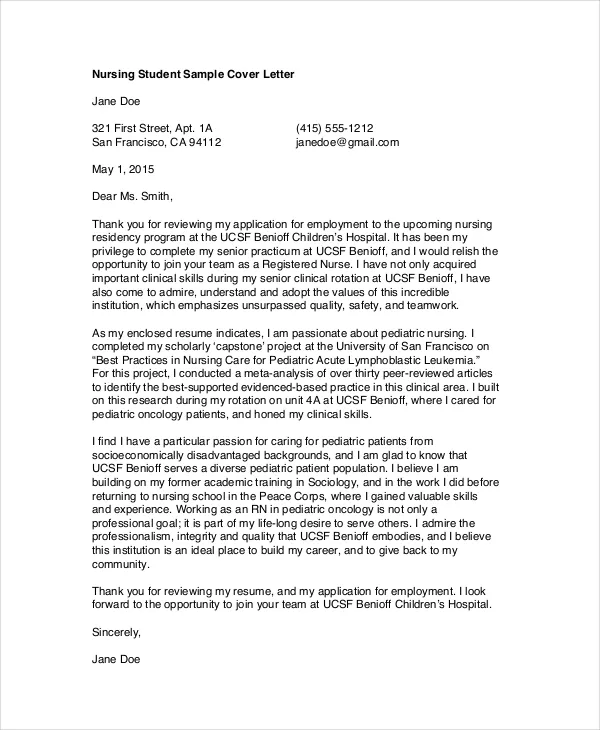
The closing paragraph is your final opportunity to leave a lasting impression. Thank the hiring manager for their time and consideration. Reiterate your interest in the position and the healthcare organization. Include a clear call to action to encourage the employer to contact you for an interview. Keep the closing paragraph concise and professional.
Reiterating Interest
Briefly restate your enthusiasm for the role and the opportunity to contribute to the organization. Emphasize your commitment to nursing and your passion for patient care. This helps to reinforce your message and remind the employer of your interest. Make it clear that you are a strong candidate and are excited to learn more.
Call to Action
End your cover letter with a clear call to action, such as, ‘I am eager to discuss my qualifications in an interview.’ Provide your contact information again, or indicate your availability for an interview. Make it easy for the employer to take the next step. Thank the employer again for their consideration, and express your anticipation to hear from them soon.
Formatting and Style Tips
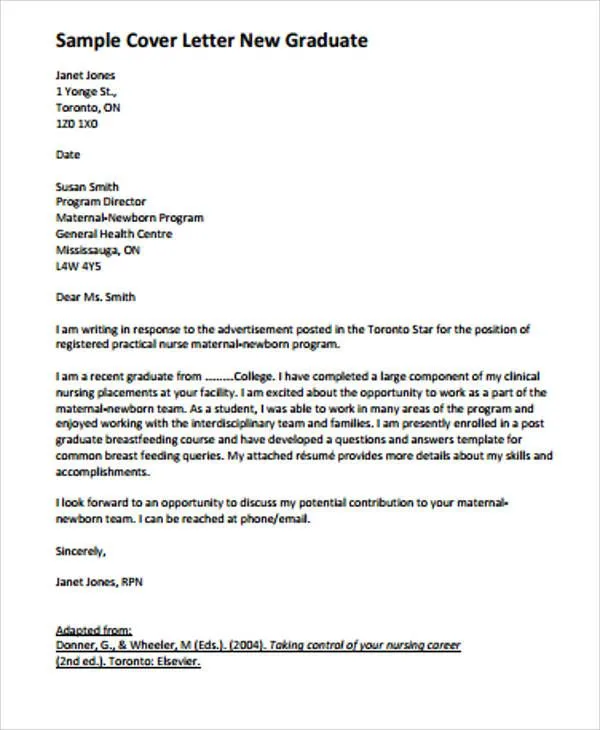
To ensure your cover letter makes a positive impression, pay close attention to formatting and style. A professional appearance demonstrates your attention to detail and commitment to quality. Following these tips will help you create a polished and effective cover letter.
Professionalism
Maintain a professional tone throughout your cover letter. Use formal language and avoid slang or contractions. Proofread carefully to avoid any grammatical errors or typos. Use a professional font, such as Times New Roman, Arial, or Calibri, and maintain consistent formatting throughout. Ensure your letter is well-structured and easy to read. Avoid using jargon or technical terms that the hiring manager may not understand.
Proofreading
Always proofread your cover letter carefully before submitting it. Check for any grammatical errors, typos, and formatting inconsistencies. Having a second pair of eyes to review your letter is also a great idea. Proofreading ensures your cover letter is free of errors and presents you as a detail-oriented candidate. It’s important to double-check all contact information and make sure it’s accurate.
Length
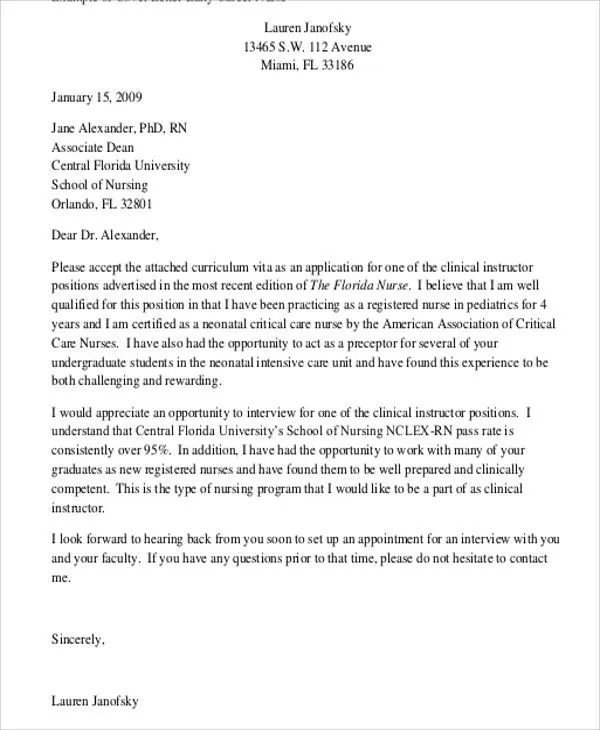
Keep your cover letter concise and focused. Aim for one page in length. Focus on the most relevant experiences and skills. Be specific and avoid unnecessary details. Your cover letter should provide a snapshot of your qualifications. Keep the reader engaged by conveying your information in an easy-to-read manner.
Sample Cover Letter Structure
Understanding the basic structure of a cover letter will help you create a professional document. This structure will ensure your cover letter is organized, easy to read, and delivers the key information employers are looking for.
Header
Include your contact information at the top of the cover letter. This includes your name, address, phone number, and email address. Add the date, followed by the hiring manager’s name, title, and the healthcare organization’s address. This information will allow the reader to contact you easily. Make sure all the information is accurate and up-to-date.
Salutation
Use a professional salutation, such as ‘Dear Mr./Ms./Mx. [Last Name]’ or ‘Dear Hiring Manager.’ Address the hiring manager by name if you know it; if not, use a general greeting. Ensure your salutation is appropriate and reflects the professional tone of the letter. Avoid informal greetings to maintain professionalism.
Body
The body of your cover letter is where you showcase your qualifications and express your interest in the position. Start with an opening paragraph that states the position you’re applying for. Highlight your key skills, experiences, and academic achievements in the body paragraphs. Use clear, concise language, and provide specific examples to illustrate your points. Focus on your qualifications and tailor your letter to the job description.
Closing
End your cover letter with a strong closing paragraph. Reiterate your interest in the position, thank the hiring manager for their time and consideration, and include a call to action. Provide your contact information again, or indicate your availability for an interview. Sign off with a professional closing, such as ‘Sincerely’ or ‘Best regards,’ followed by your name. Always express your gratitude to the reader.
Resources and Examples
To further enhance your cover letter writing skills, you can utilize various resources. Many websites and career centers offer sample cover letters for nursing students that you can adapt to your specific circumstances. Use these examples as templates and tailor them to fit your experiences and the job you are applying for. Check out career resources and employment boards for additional writing tips. Professional advice will help you create a strong application.
